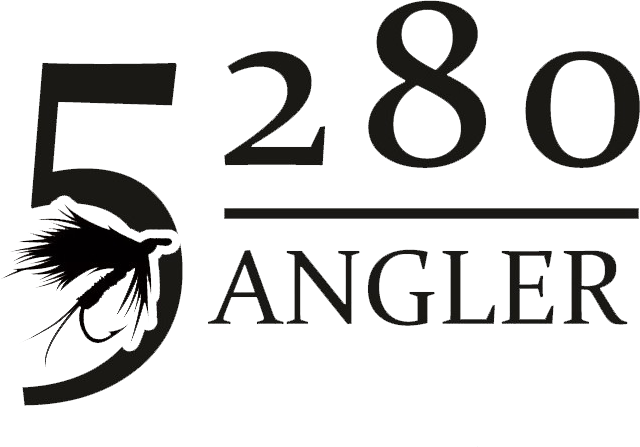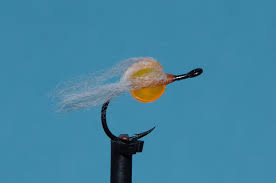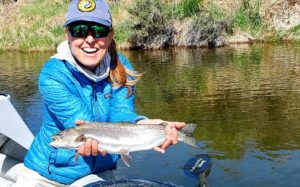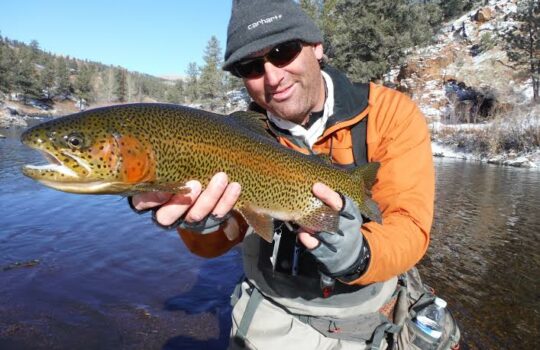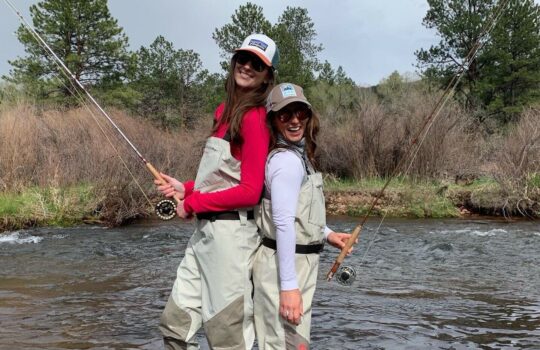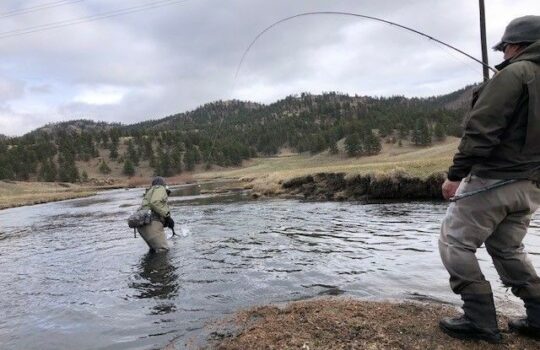With the spring season upon us, many changes in the environment have begun to take place, especially in our local rivers and streams. Subtle cues such as water temperature, level and clarity trigger a massive migration of fish to start running up the streams where they were born to repeat the spawning process. It is this spawning process and the returning fish that are of importance to the educated fly angler, seeing as some of the best fishing can come during this time of year.
The lake-run trout and the river residents have a particular interest in eating fresh eggs from their brethren. Presenting egg flies to fish that have ventured up into the rivers can provide a very exciting day of fishing.
It might seem so simple but the truth is natural eggs that come from spawning fish make up a more than substantial percentage of the seasonal food base in streams for foraging trout species. Pre-spawn fish are able to set themselves in a downstream position from other spawning fish and forage aggressively on eggs that happen to wash out or be knocked out of the spawning beds. These eggs contain many of the basic nutrients for sustaining life, such as high amounts of protein and carbohydrates that will help to fatten fish quickly.
Egg fishing for trout may sound relatively simple but be warned; you should expect to lose a large number of flies due to snagging up on the river bottom or foul-hooking fish. Often the best presentation requires getting your fly right in the thick of things meaning bouncing off the bottom all the way down the river for long stretches. It can be very frustrating to the beginning fly angler trying to decipher between the current and rocks pulling on your fly and the soft strike of a weary fish. If you always keep in mind the golden rule that the indicator should be downstream of the fly and be fairly tight to the weight and fly then you can start to apply it to different situations.
One of the most important aspects to fishing with egg flies is your indicator system. Egg flies, like nymphs, are dead-drifted downstream, so being able to quickly detect strikes from fish will increase your odds of landing good numbers of fish. Ideally, having an indicator made from bright-colored, high-floating foam is what you are looking for but putties and yarn can also be adequate with shallower water conditions.
Detecting strikes from fish is a combination of watching the indicator and the behavior of the fish at the same time (given you can see the fish working the bottom). In most instances, takes from large fish will be obvious, with the fish moving off of the bottom to where the fly is drifting and pulling down the indicator aggressively. In other cases the indicator won’t move as you pass the fishes position but you visualize the fishes mouth actively eating objects floating downstream or you will simply see a tick or slowing down of the indicator giving you just enough info to set the hook before the fish spits your egg fly. Paying close attention to each drift and how your fly line is drifting will pay off in the long run. The biggest fish seem to always be the ones that suck in egg flies softly barely tipping you off to their presence on your line.
The eggs from spawning fish in the river may come in many different sizes and colors. Eggs from spawning rainbow trout are approximately 3/16 inch in size and can be characterized with a translucent yellowish-orange color. Brown trout have eggs that are roughly a 1/4 inch in size and are bright orange like the rest. Imitating these different types of eggs can be very lucrative for fly fisherman.
It is also a good idea to carry egg patterns in an off-white or cream color. When the natural eggs are laid, some do not get fertilized during the spawning procedure and become a murky, whitish color. These dead eggs sometimes can save the day when fish become extremely finicky. Finally, carrying patterns that range from single eggs to egg clusters can also be a good idea. When fishing murky water using an egg cluster patterns has been known to work a little better than single eggs. In turn when you are fishing clearer waters with finicky fish single or double egg patterns will produce the best results.
Fishing egg flies might not be exactly what you envisioned when you first thought about getting into fly fishing, but for a relatively short time every year they are some of the most productive flies you can fish. Any seasoned fly angler will attest to these flies productiveness, so why not get out and add another time tested technique to your arsenal? Tie up a couple of these in both 6mm and 4mm in apricot, tangerine and ruby colors. Don’t forget to add the milk veil.
*NOTE: Please do not walk onto the Redds (spawning beds) or fish to spawning pairs of fish! When you walk through a Redd you are killing scores of unborn trout. When you fish to a spawning pair you are unnecessarily stressing them possibly causing the hen to jet her eggs prematurely resulting in unfertilized eggs. So my friends, good Luck…and tight lines!
OTTER’S Soft Milking Egg:
Hook: TMC 2488, sizes 14-16 Thread: Uni-Thread 6/0, Red or Orange
Egg: Otter’s Soft Eggs, Apricot, Tangerine, or ruby Veil: Otter’s Milking Veil Glue: Zap-A-Gap or any Super Glue
